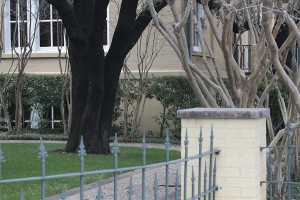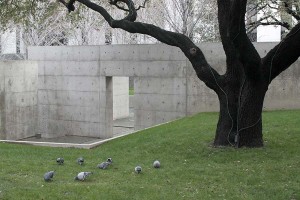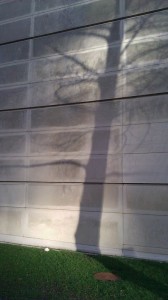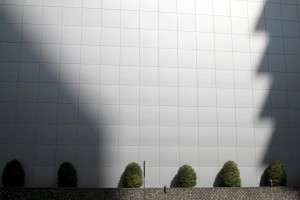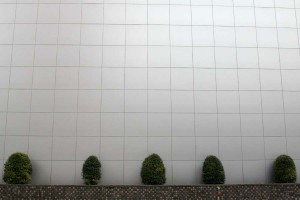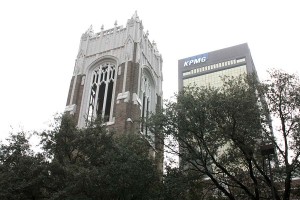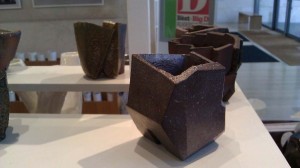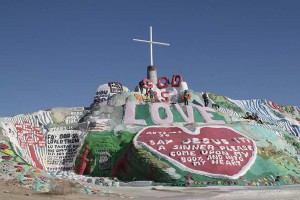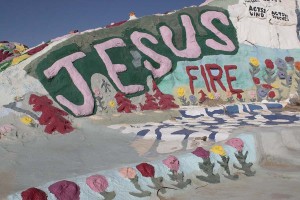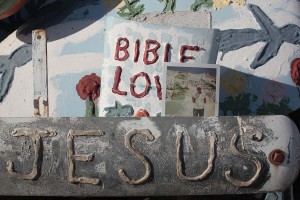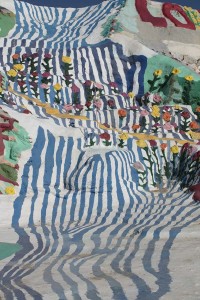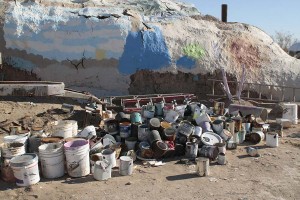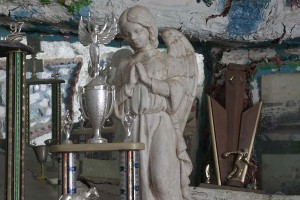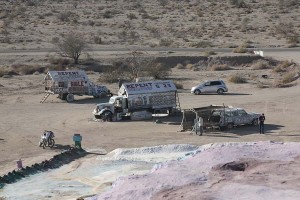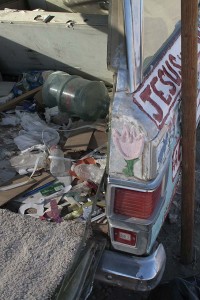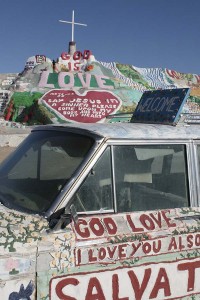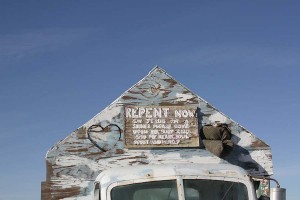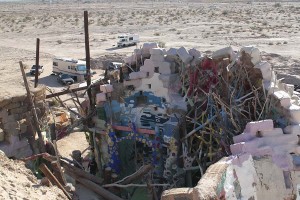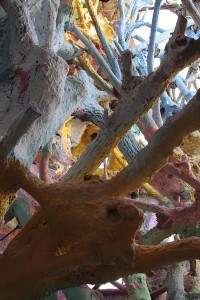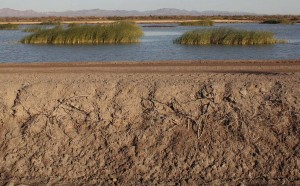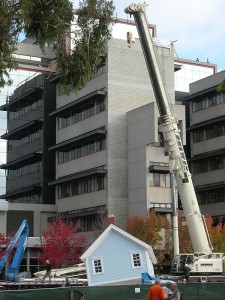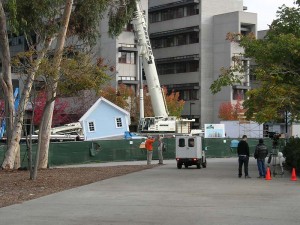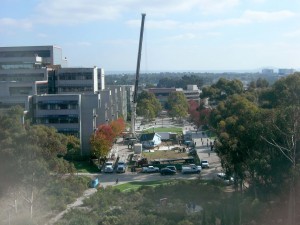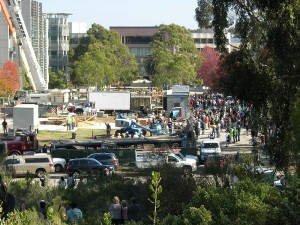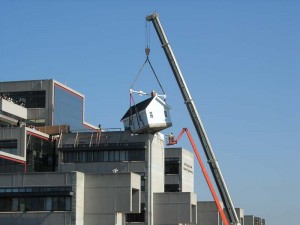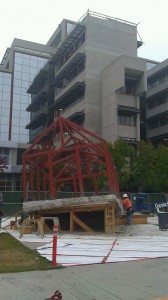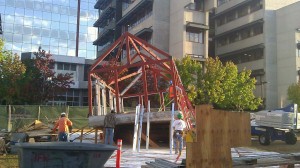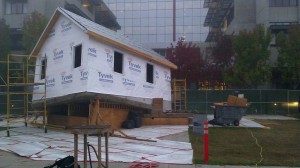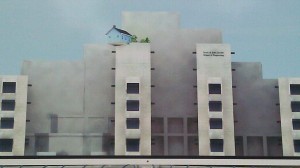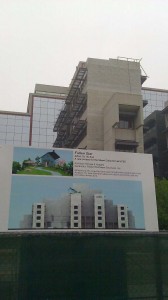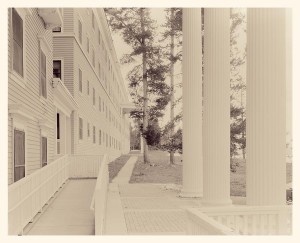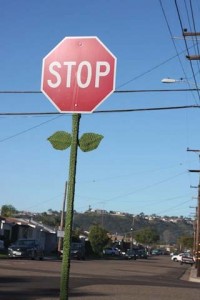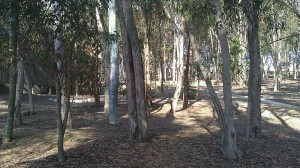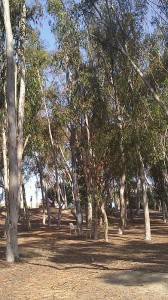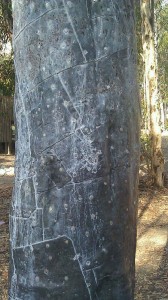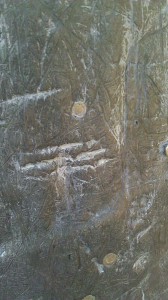I need to be careful about the things I write. I’d passed along a statement that someone had made calling the area around Dallas as “tornado country,” and look what happened.
Yikes! But unless I’m Zeuss I’m thinking this wasn’t my doing. At least this was one of this situations where you can say that you’re glad it wasn’t worse.
This will be my last tourist post from the land of dangerous tornadoes: a quick visit to the sculpture garden at the Nasher Sculpture Center, a city block of calm in the heart of Dallas.
Let me start off with my award for Best Use of Bamboo in a Museum Setting. Access into the outdoor sculpture garden is blocked by the sort of fence that you see most often in in museums, the kind where there are uprights spaced a few inches apart and set in concrete below the level of the ground. It’s an attractive fence option, and one that’s less confrontational than many. Here at the Nasher it’s softened further, with the uprights camouflaged in a grove of green-culmed bamboo.
Peter Walker gets the credit for designing the outdoors spaces here. He’s probably now best known for joining Michael Arad during the final stages of the winning design for the National 9/11 Memorial, probably one of the highest profile public art and landscape architecture projects out there. I know him best for Library Walk, a design he executed at UCSD, a work that I step on several days a week.
In the phrase “sculpture garden” sculpture comes first. Like the project at UCSD that I walk on, the spaces at the Nasher are deferential to the art. But the spaces never just lurk the background.
Where the art isn’t so prominent are the spaces where you can really notice Walker’s work. Steps leading down from the garden level break up the geometric regularity with two trees, and species of tree change as the spaces go from open to enclosed, small to large in scale.
The plantings and hardscape are flattering participants for many of the works. This is Barbara Hepworth’s Squares and Two Circles (Monolith) a work from 1963.
Walker’s garden glows with an aura of rational structure, a sense that works really well with a lot of these sculptures.
People want to see your Serra if you have a sculpture garden. Here’s theirs, lit with nice dappling light.
Hedges take over the role of walls in interesting ways. Not a revelation, but nicely done. Here you have a short “wall” providing crowd control for George Segal’s Rush Hour.
The members of this crowd haven’t fared as well. (Magdalena Abakanowicz’s Bronze Crowd, bronze, 1990-1.)
In this garden space you’re free to walk around and make connections and receive your own private epiphanies. Like, Joan Miro and Mark di Suvero both used circles and similar diagonal lines! Oh wow.
There’s lots of indoor space here too, with works by lots of modern notables in light-filled pavilions by the ubiquitous museum architect Renzo Piano. I’ll leave that report to Lost in the Museum.
After these Dallas posts it’s feeling like I’ve been away from home too long. It’ll be back to my garden next time.


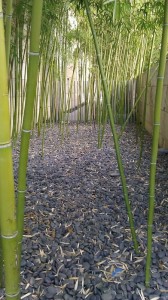

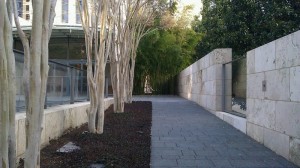


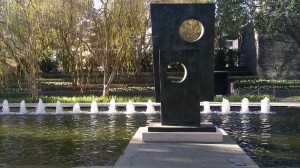
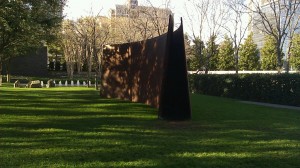
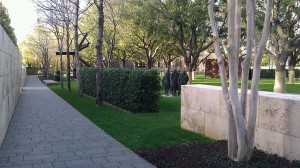

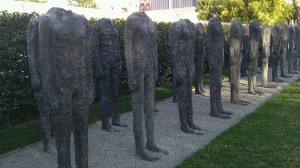
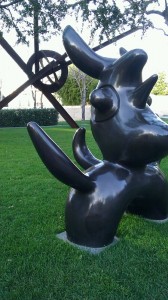
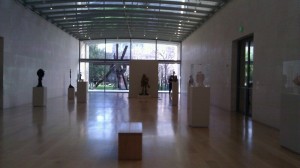

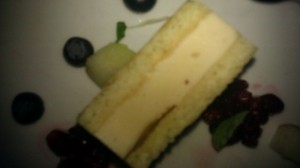
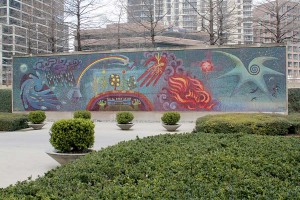
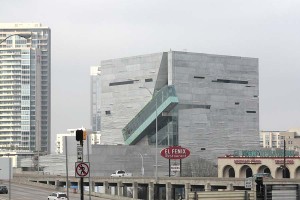
 (Photo by Magnus Manske, from the
(Photo by Magnus Manske, from the 